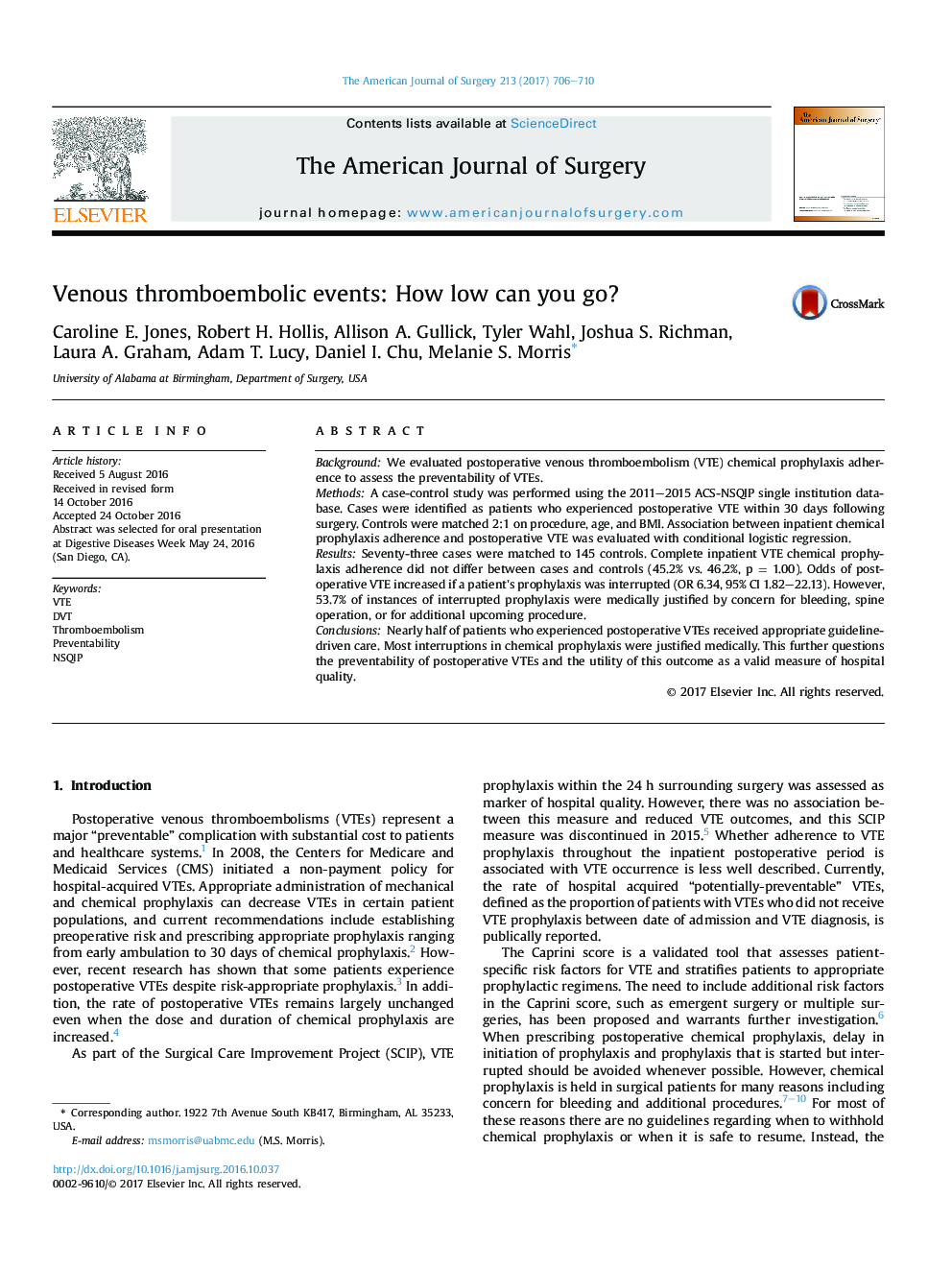| Article ID | Journal | Published Year | Pages | File Type |
|---|---|---|---|---|
| 5731300 | The American Journal of Surgery | 2017 | 5 Pages |
â¢Chemical prophylaxis reduces the risk of VTE but does not eliminate it entirely.â¢The odds of postoperative VTE increased significantly if a patient's prophylaxis was interrupted, but in over 50% of cases the reasons for interrupted prophylaxis were medically justified.â¢Given that not all VTEs observed in this study were preventable, the prevalence of postoperative VTE may not be a valid quality measure.
BackgroundWe evaluated postoperative venous thromboembolism (VTE) chemical prophylaxis adherence to assess the preventability of VTEs.MethodsA case-control study was performed using the 2011-2015 ACS-NSQIP single institution database. Cases were identified as patients who experienced postoperative VTE within 30 days following surgery. Controls were matched 2:1 on procedure, age, and BMI. Association between inpatient chemical prophylaxis adherence and postoperative VTE was evaluated with conditional logistic regression.ResultsSeventy-three cases were matched to 145 controls. Complete inpatient VTE chemical prophylaxis adherence did not differ between cases and controls (45.2% vs. 46.2%, p = 1.00). Odds of postoperative VTE increased if a patient's prophylaxis was interrupted (OR 6.34, 95% CI 1.82-22.13). However, 53.7% of instances of interrupted prophylaxis were medically justified by concern for bleeding, spine operation, or for additional upcoming procedure.ConclusionsNearly half of patients who experienced postoperative VTEs received appropriate guideline-driven care. Most interruptions in chemical prophylaxis were justified medically. This further questions the preventability of postoperative VTEs and the utility of this outcome as a valid measure of hospital quality.
